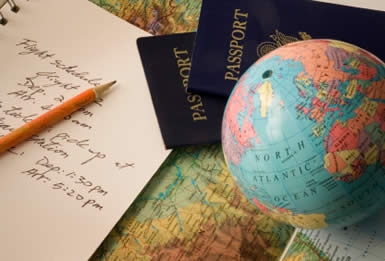
Have you ever tried to teach a monkey calculus? It gets very similar results to trying to teach a monkey particle physics and would end with the poor primate being about as bored as a Mcdonalds drive through worker. I found myself in roughly the same position when I recently opened the Lonely Planet Guide to Western Europe. I’m not having a dig at the Lonely Planet editorial staff but rather trying to explain a problem we all have during the initial planning stages of any long term travel, especially with the amount of really good travel information available at our finger tips. The problem is being overwhelmed with too many choices, leading to paralysis.
Let’s be honest, it’s a pretty good problem to have. I felt like an overweight child in a cake store when I found myself surrounded with hundreds of tantalizing possibilities each as exciting or curious as the next. The Croatian coast or Barthelona? Big Ben or Belfast? Corsica or Tuscany? I wanted to visit all these places and then far more as well, I took a deep breath and put the book down. My mind was swimming with the possibilities of each different yet intriguing country inside the EU. The awesome thing about Europe is just how close together everything is. I come from Australia, a country where places are so ridiculously far apart from each other that the animals evolved pouches to help carry their stuff.
A few days drift past, with me cautiously eyeing the book from the safety of another room. How much planning for a trip like this was enough? With my dubious ability to hit maps with darts from a distance I figured I needed a more structured approach that left room for change, travel fails and as yet unknown opportunities. I spent 2 hours making a list of the essential places I needed to visit and a list of the slightly less essential places I wanted to visit. This is how I approach long term travel planning:

1. Set major milestones during a trip and stick to them
If you need to meet Bob in London on the 34rd of March, then lock that in and work towards getting to London for that date. Selecting and sticking to these ‘skeleton’ dates gives a void of empty time a basic structure. I may not know what I’m doing next week but I do know that i’ll be in Rome in 3 months, 14 days and 10 hours. This strategy also forces you to select a few ‘key’ places/sites/events to visit in your given time frame to try and stick to. This might be hard but you have to realise that you can’t see everything, narrow your list down given things like budget and timeframes and work to that.
2. Plan only a week or two ahead day to day
I like this approach as it gives me the security of knowing I have some idea of where ill be next week but it also allows for the flexibility of the unknown. With modern access to WIFI, booking and researching things like accommodation or destinations in a short time frame has never been easier. I found my iPhone was absolutely vital for this in Japan (Google maps is also an amazing tool).
3. Be flexible enough to adapt to things on the road
You never plan for a flight to get cancelled, miss a train, lose a shoe in Vietnam, or to have to chase that small kid who just stole your camera. Shit happens and you need to be flexible enough to change your plans last minute and adapt to changes when you have to. This frame of mind is in my opinion vital to enjoying the best long term travel experience possible.
I love having a flexible approach to long term travel like this as it allows for the inevitable mishaps, mind changes and new opportunities but has enough structure to plan the best things in advance. Trying to plan things too extensively in my opinion is not really possible and also goes against the ‘come what may’ philosophy I apply to travel. I do however know a few anal retentive people who have to plan absolutely everything in advance, most of these people also have to count the telephone poles on the way to work and are afraid to shake hands.
Next: The one thing I really hate when I travel, dickheads.

It is not so easy to be flexible on the road 🙂